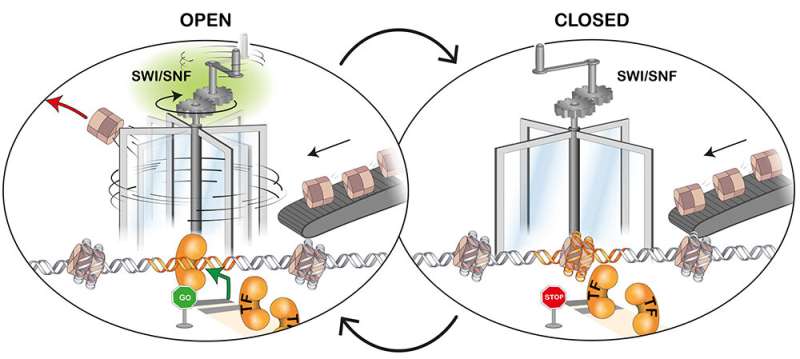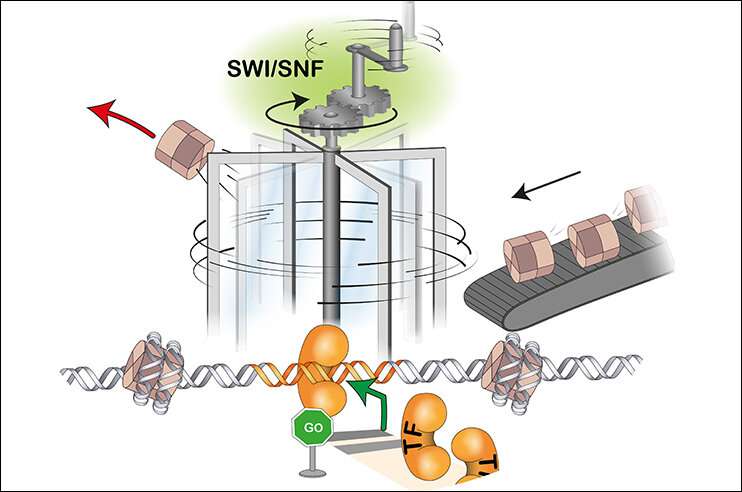Chromatin remodelers never rest to keep our genome open

Chromatin remodelers are needed to take nucleosomes away from DNA in order to make room for transcription factors to bind, and regulate the activity of our genes. It has been unclear how dynamic this process is. Researchers from the Schübeler group now revealed that active regulatory regions undergo continuous cycles of chromatin opening.
Transcription factors (TFs) are proteins that help turn specific genes on or off by binding to nearby DNA. In order to bind, TFs first have to find room on the DNA, which is present in form of chromatin and as such tightly packed around nucleosomes. For that, they need the assistance of chromatin remodelers. These proteins have the ability to either evict, slide, insert or replace nucleosomes, thereby exposing underlying DNA sequences. "Open" chromatin is the main feature of active regulatory DNA regions.
In a recent study, researchers from the group of Dirk Schübeler, together with collaborators from Novartis and FMI, explored the dynamics of the process of chromatin opening and subsequent TF binding. They studied remodelers called SWI/SNF, a group of enzymes that are mutated in in nearly 25% of cancers. The researchers inactivated these remodelers in mouse embryonic stem cells and analyzed how accessible the chromatin was subsequently over time. They made the unexpected observation that within minutes of remodeler inhibition, many sites in the genome displayed reduced accessibility and TF binding. This was the case independent of TF function, however dynamics of reduced accessibility and binding were different for some activating or repressive TFs. Once the inhibitor was removed, nucleosome depletion, accessibility to DNA and gene expression were rapidly restored.

The researchers deducted from these findings that the removal of the nucleosomes by remodelers and the TF binding to chromatin does not represent a stable situation but is a process that is constantly happening. "Local chromatin opening appears to be part of a continuous cycle of re-establishment of active regulatory regions in a process that is otherwise masked in steady-state analyses, which might help to better understand how mutations in SWI/SNF can cause cancer," says postdoc Mario Iurlaro, the first author of the study. In order to help us picture these crucial events taking place in the cell, he adds: "Chromatin remodelers orchestrate access to chromatin in living cells. We now have learned that this access can be compared not to a door that is open or closed, but rather to a revolving door, constantly kept in motion by remodelers."
More information: Mario Iurlaro et al. Mammalian SWI/SNF continuously restores local accessibility to chromatin, Nature Genetics (2021). DOI: 10.1038/s41588-020-00768-w
Journal information: Nature Genetics


















